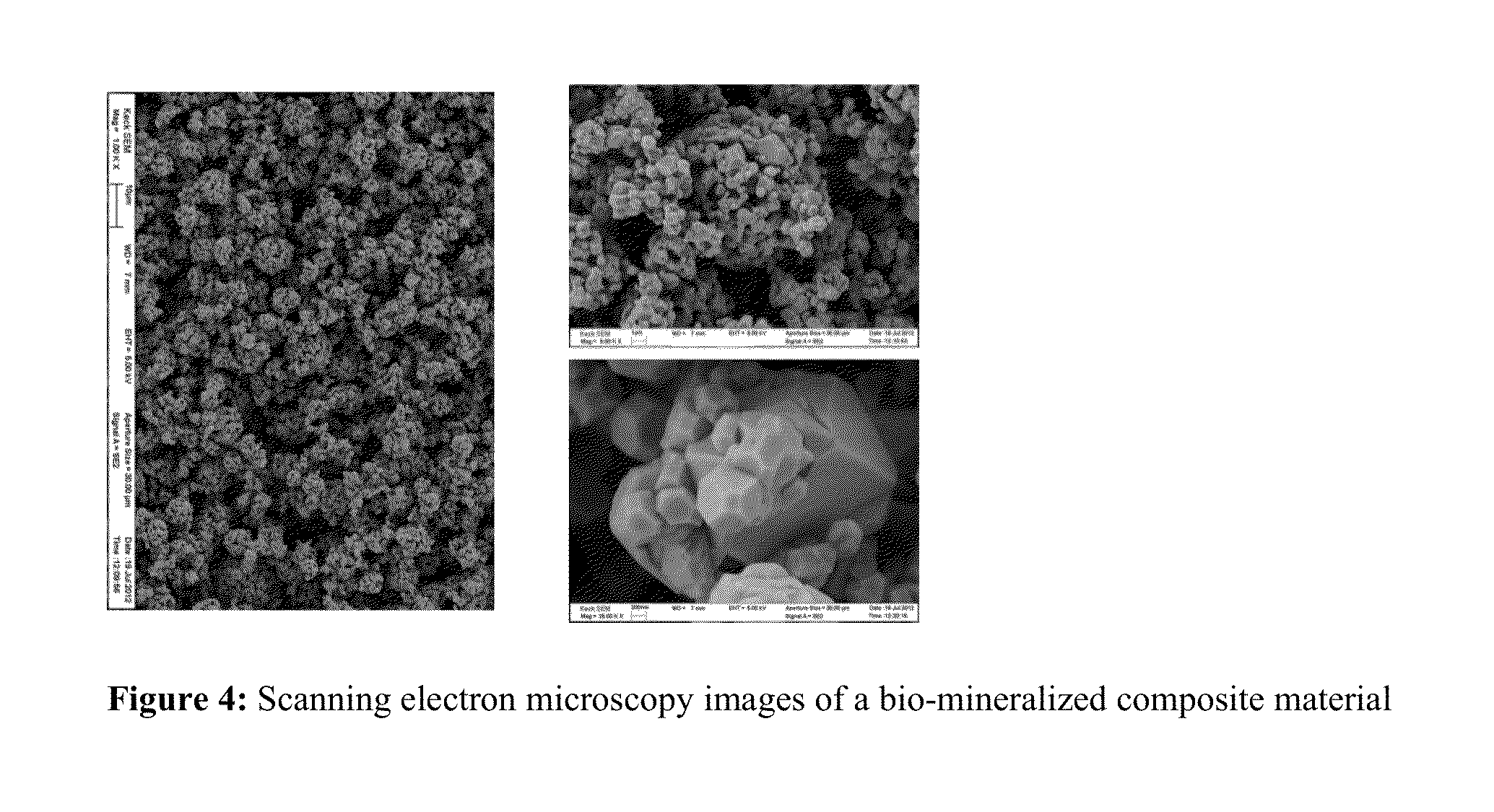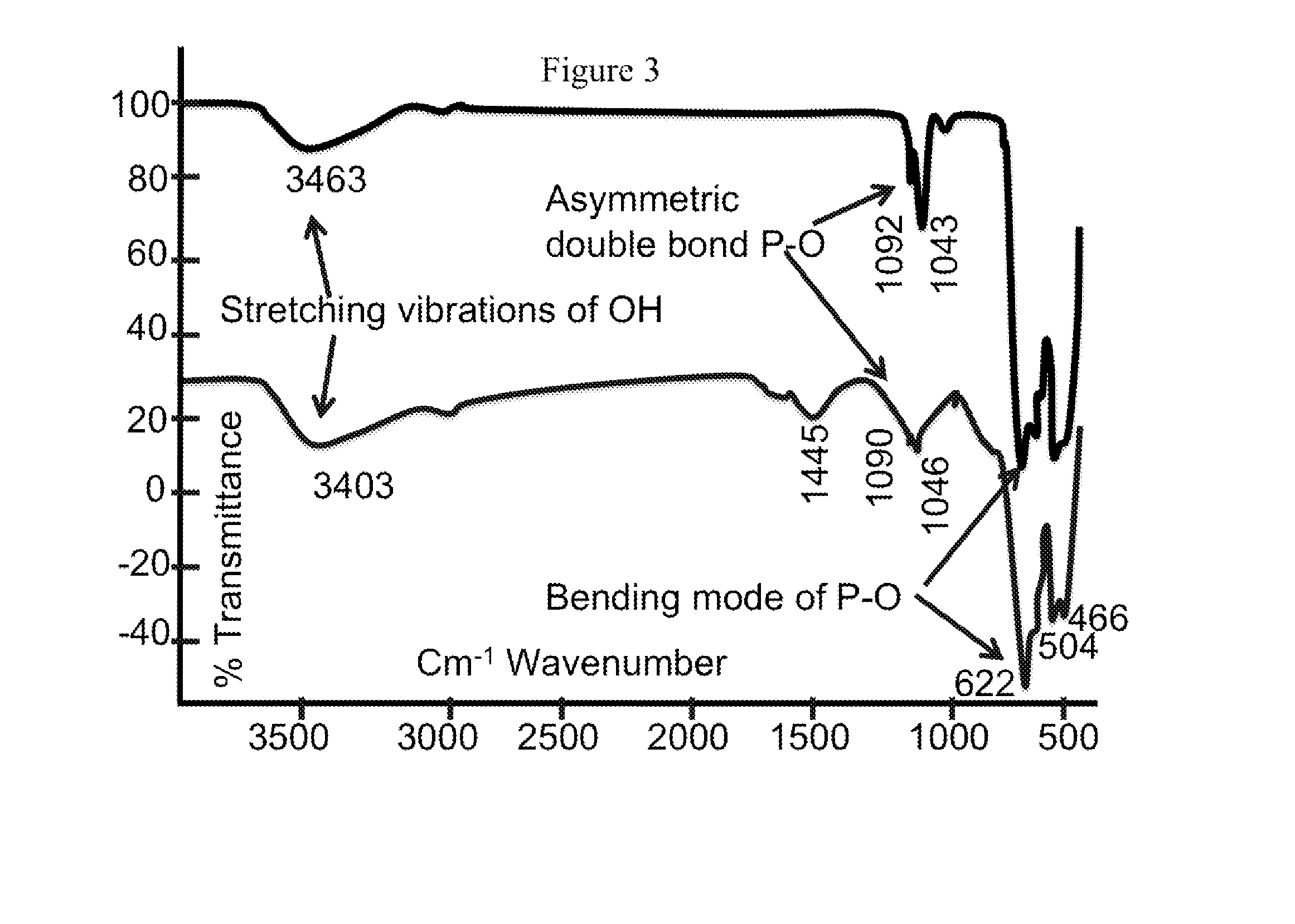Bio-mineralized cathode and anode materials for electrochemical cell
a cathode and anode material technology, applied in the field of biomineralized cathode and anode materials for electrochemical cells, can solve the problems of material loss, material self-destruction of the cell, and limitations of the cathode and anode materials, and achieve the effect of high energy density and specific capacity
- Summary
- Abstract
- Description
- Claims
- Application Information
AI Technical Summary
Benefits of technology
Problems solved by technology
Method used
Image
Examples
example 1
Preparation of [Li1.02Mn1.5Ni0.48O4]0.97[Ca5(PO4)3(OH)]0.03 Using In-Situ Approach.
[0050]450 g of water was taken in a 1-liter beaker and following ingredients were added: 44.3 g Lithium carbonate, 142 g Manganese (III) oxide, 43.7 g of Nickel (II) oxide, green; and 12.7 g of Calcium hydroxide. Mix the ingredients briefly with a spatula, and then using a high shear mixer, with a rotor-stator and square hole stator, mix for an additional 2 minutes at 8000 RPM to reduce the grittiness of the precursors. The pH was 11.08.
[0051]Then the high energy milling technique with 2 mm YTZ media was employed. During the course of this process the solution was run continuously with peristaltic pump at 220 RPM (flow rate of 1 LPM) agitator at 1200 RPM generating a power of 1.8 KW. Further use a 5 liter jacketed recirculation tank with an electric stirrer. Start processing the solutions by pouring the contents of the 1-liter beaker into the tank while the mill is running
[0052]Meanwhile in a separate...
example 2
Preparation of [Li1.02Mn1.5Ni0.48O4]0.97[Ca5(PO4)4(OH)]0.03 Using Ex-Situ Approach.
[0056]450 g of water was taken in a 1-liter beaker and following ingredients were added: 44.3 g Lithium carbonate, 142 g Manganese (III) oxide, and 43.7 g of Nickel (II) oxide, green. Mix the ingredients briefly with a spatula, then using a high shear mixer with a rotor-stator and a square hole stator, mix for an additional 2 minutes at 8000 RPM to reduce the grittiness of the precursors. The pH was 10.91.
[0057]Then, the obtained mixture was milled with 2 mm YTZ media and a peristaltic pump at 220 RPM (flow rate of 1 LPM) and agitator at 1200 RPM generating a power of 1.6 KW. Further use a 5 liter jacketed recirculation tank with an electric stirrer to process the mixture by pouring the contents to a 1-liter beaker into the tank while the mill is still running
[0058]Meanwhile in a separate 250 mL beaker, add 11.9 g of ortho-Phosphoric acid (85%) to an additional 50 g of DI (De-ionized) water and mix we...
PUM
| Property | Measurement | Unit |
|---|---|---|
| particle size distribution | aaaaa | aaaaa |
| voltage | aaaaa | aaaaa |
| voltage | aaaaa | aaaaa |
Abstract
Description
Claims
Application Information
 Login to View More
Login to View More - R&D
- Intellectual Property
- Life Sciences
- Materials
- Tech Scout
- Unparalleled Data Quality
- Higher Quality Content
- 60% Fewer Hallucinations
Browse by: Latest US Patents, China's latest patents, Technical Efficacy Thesaurus, Application Domain, Technology Topic, Popular Technical Reports.
© 2025 PatSnap. All rights reserved.Legal|Privacy policy|Modern Slavery Act Transparency Statement|Sitemap|About US| Contact US: help@patsnap.com



